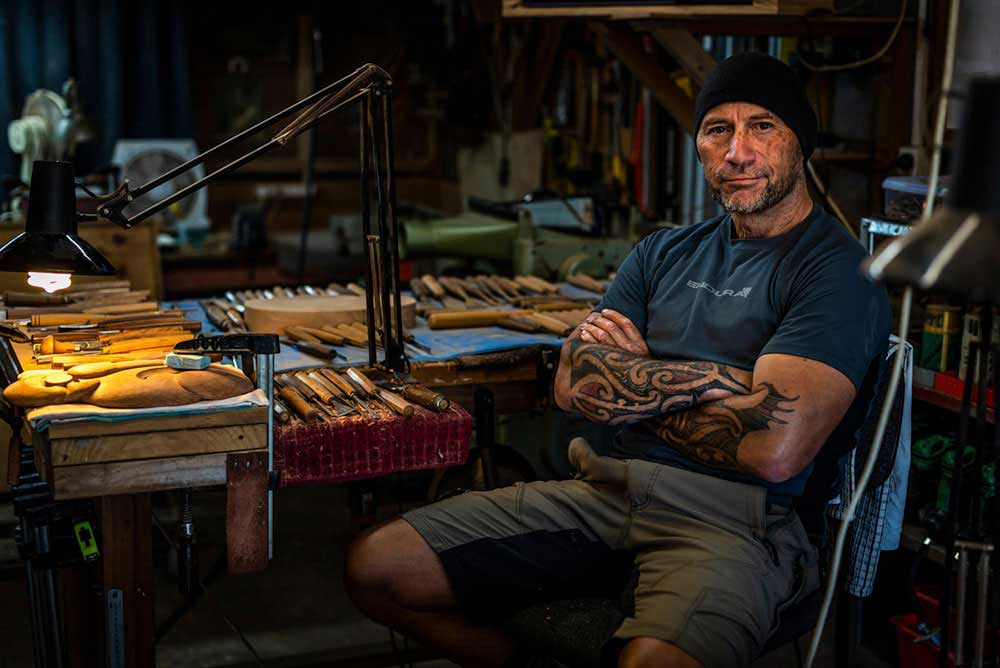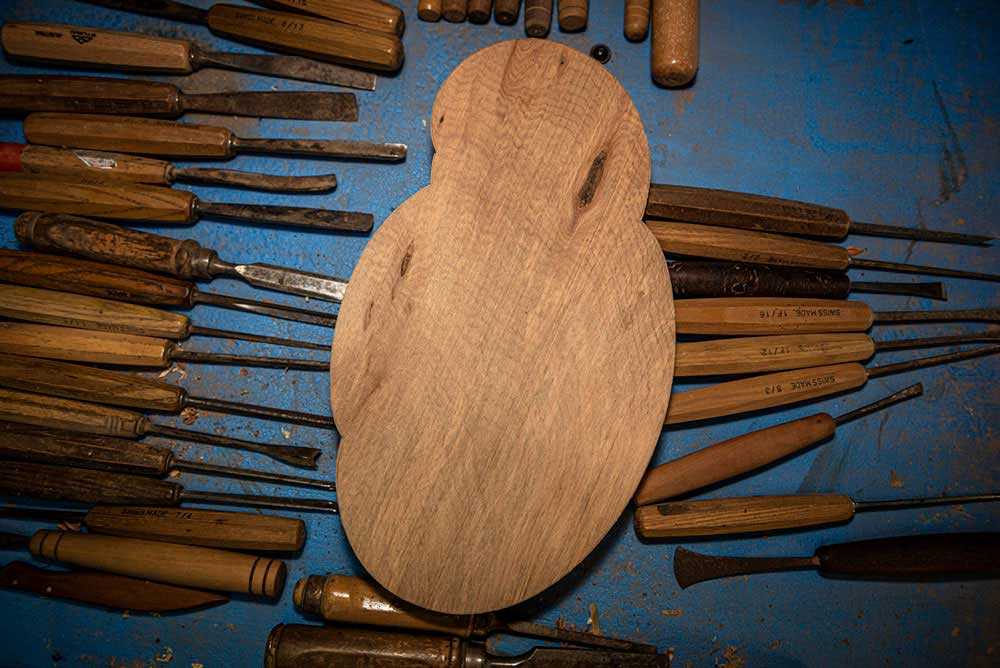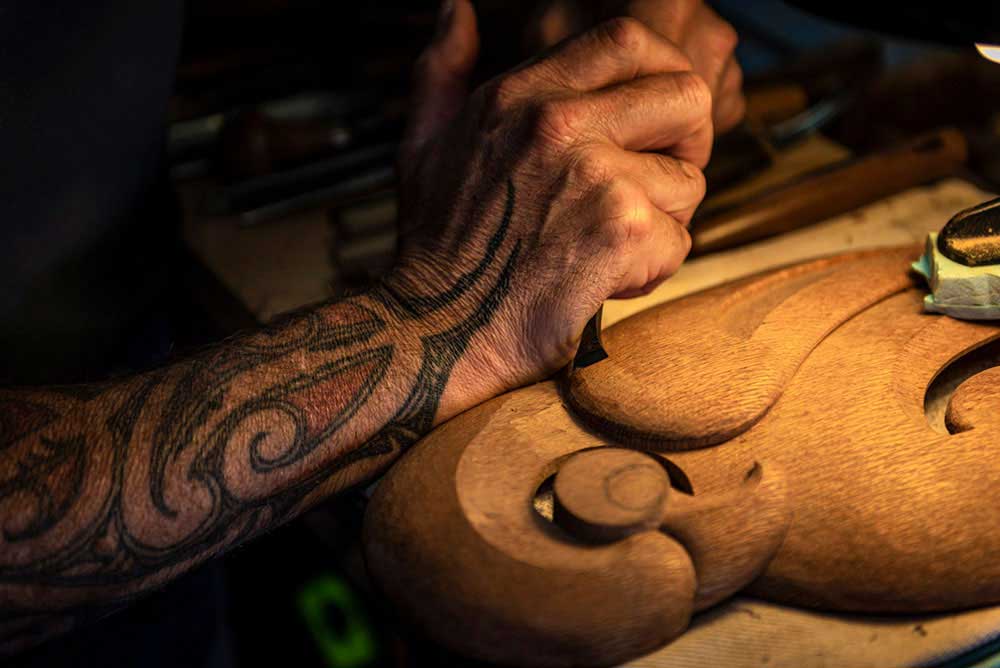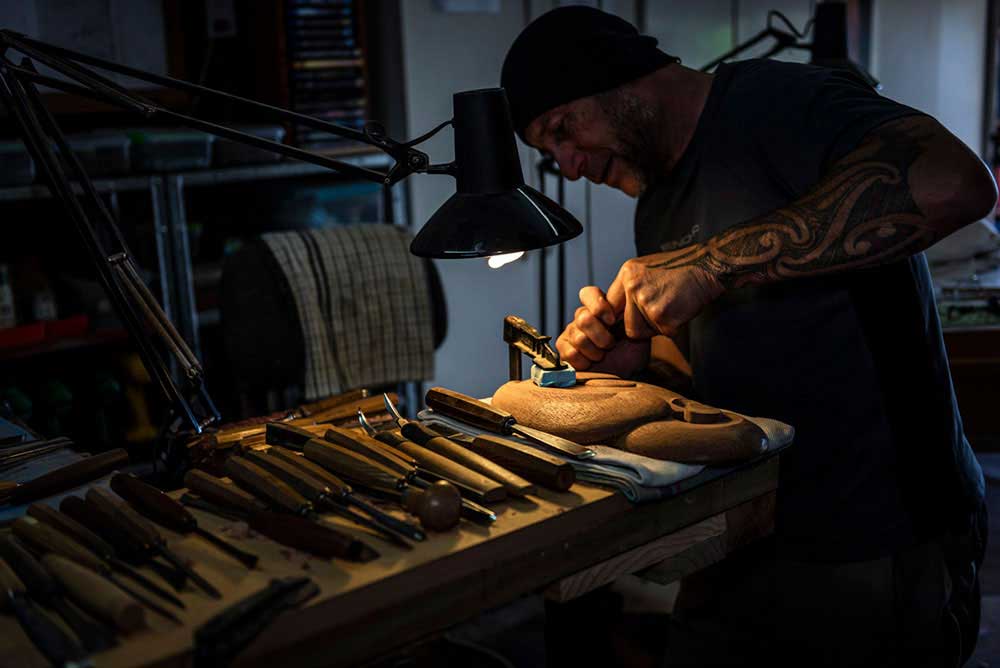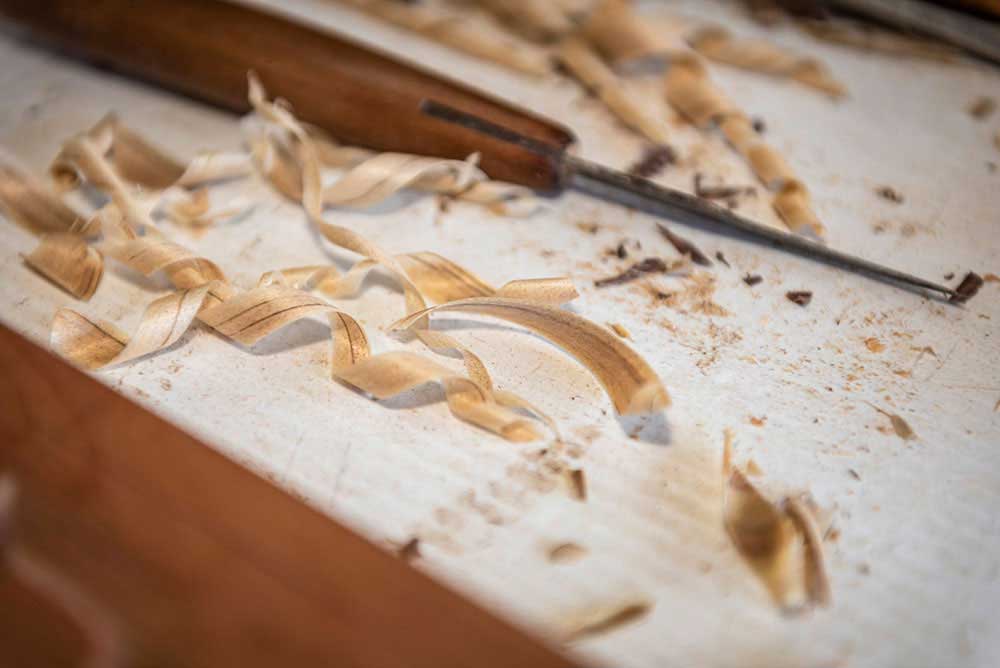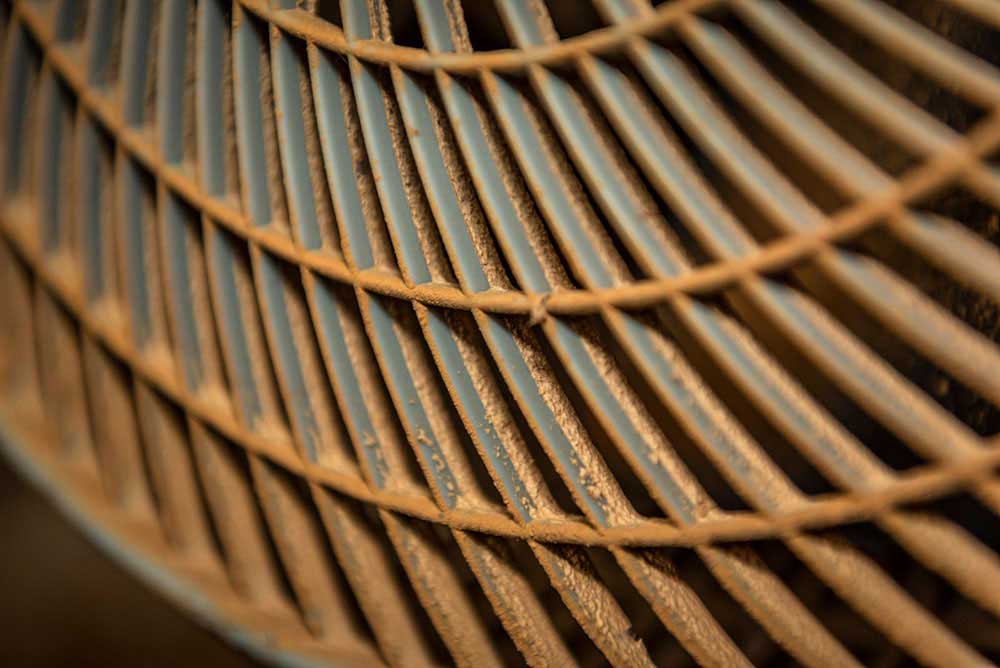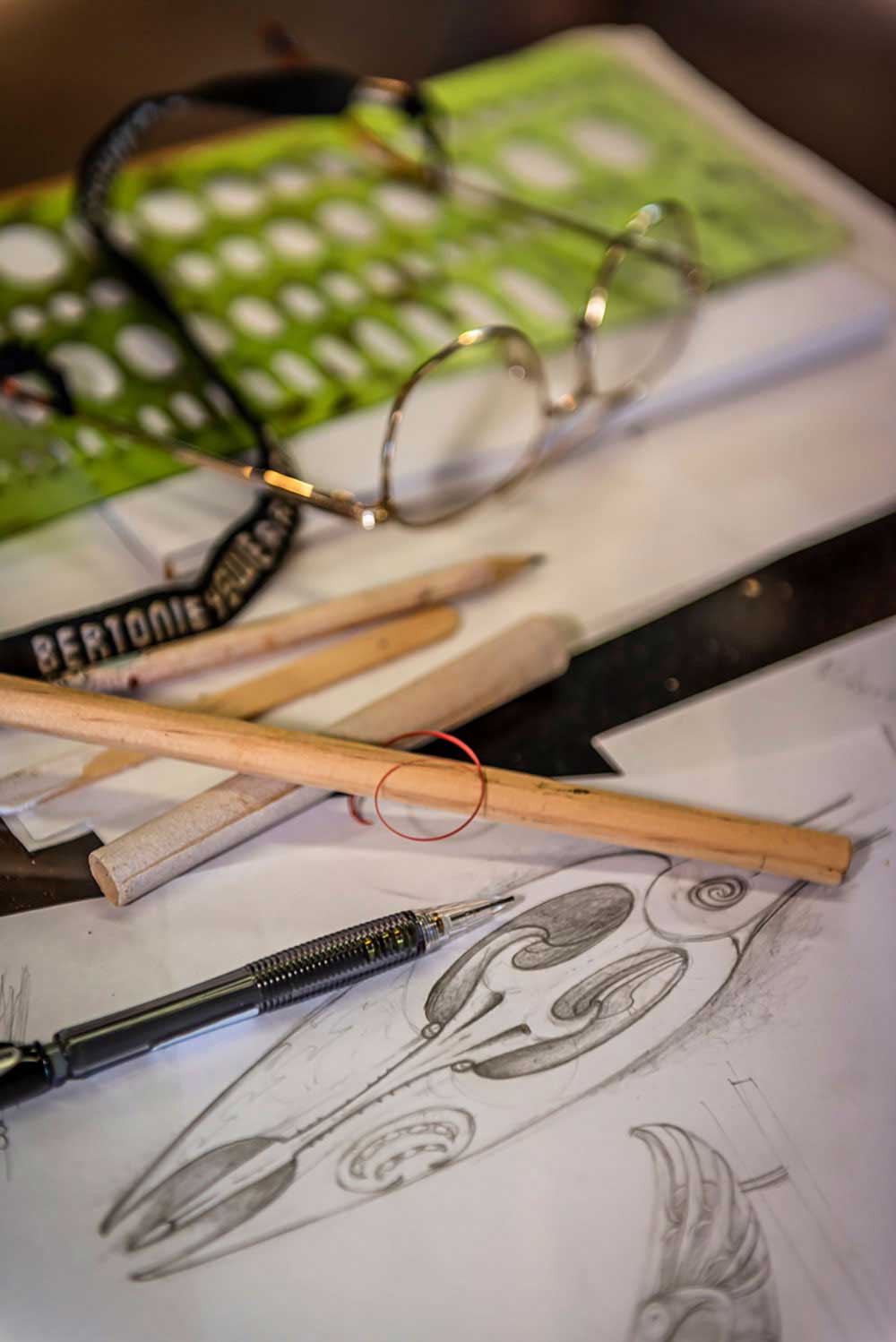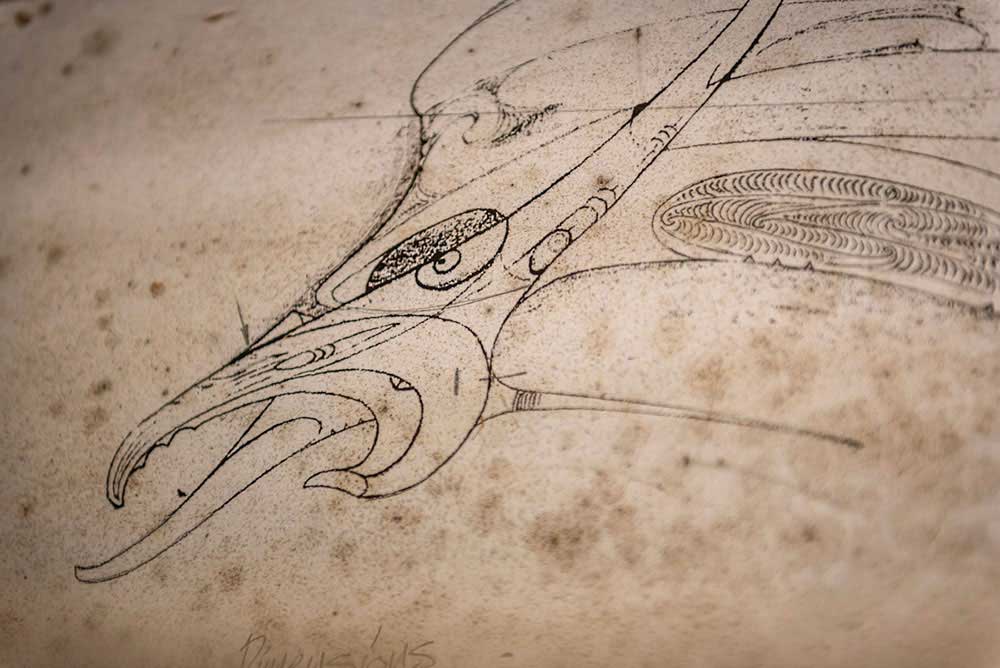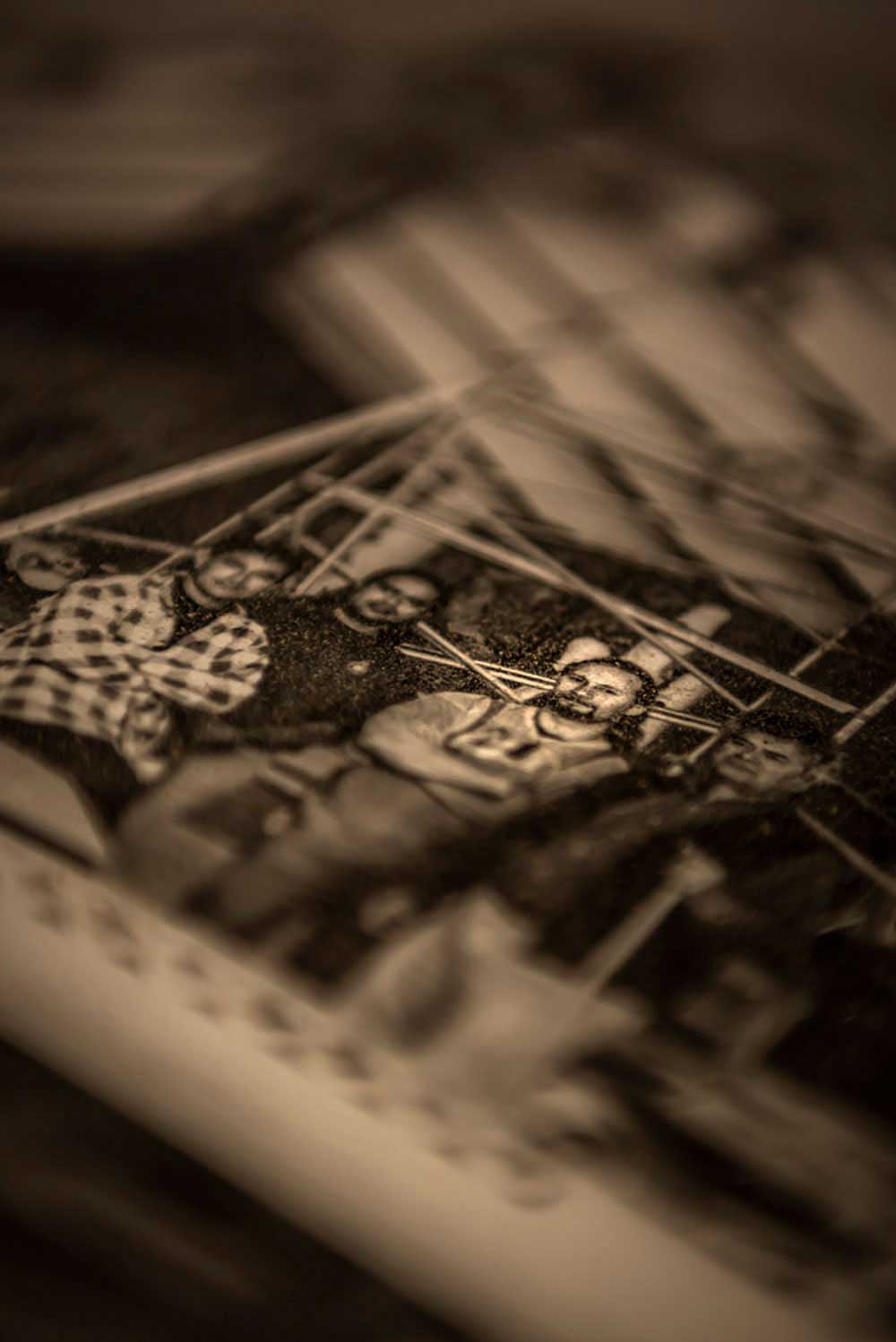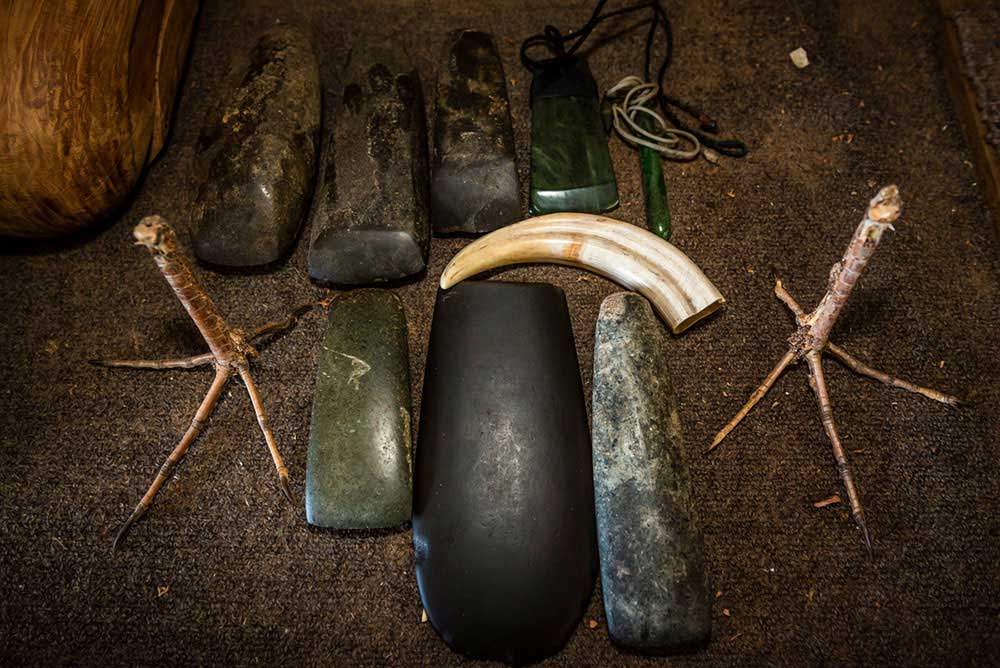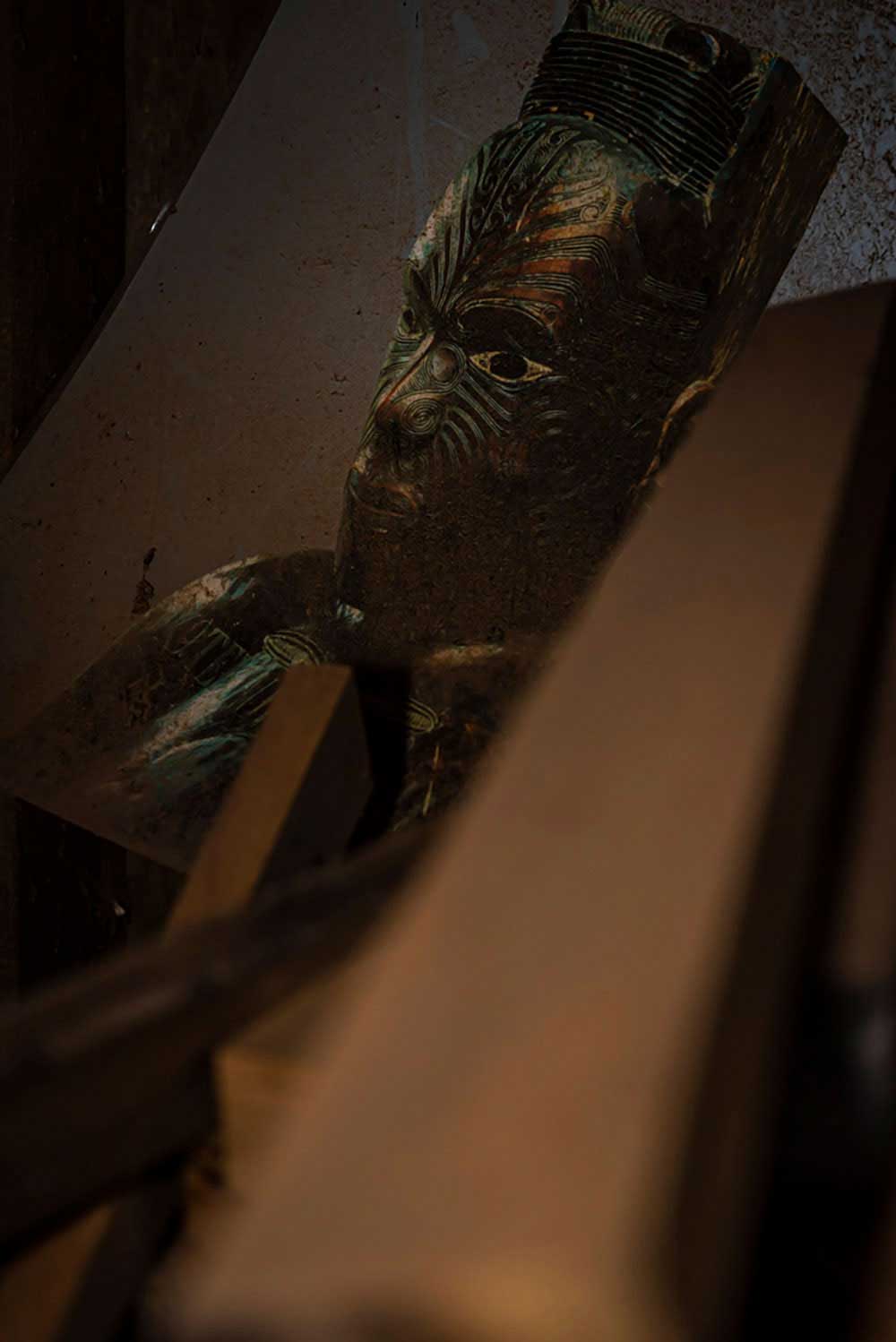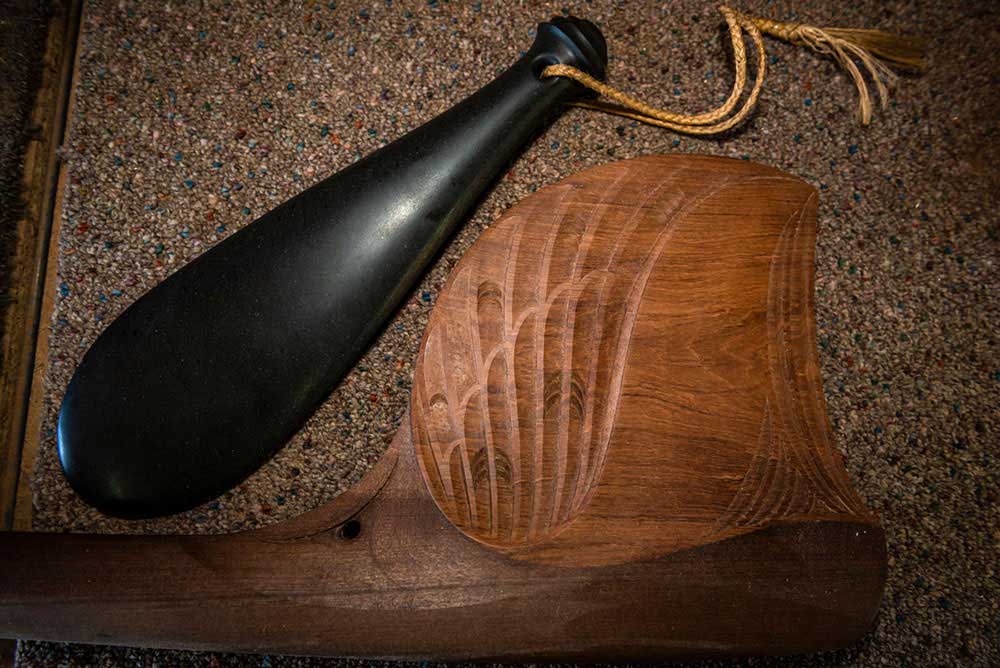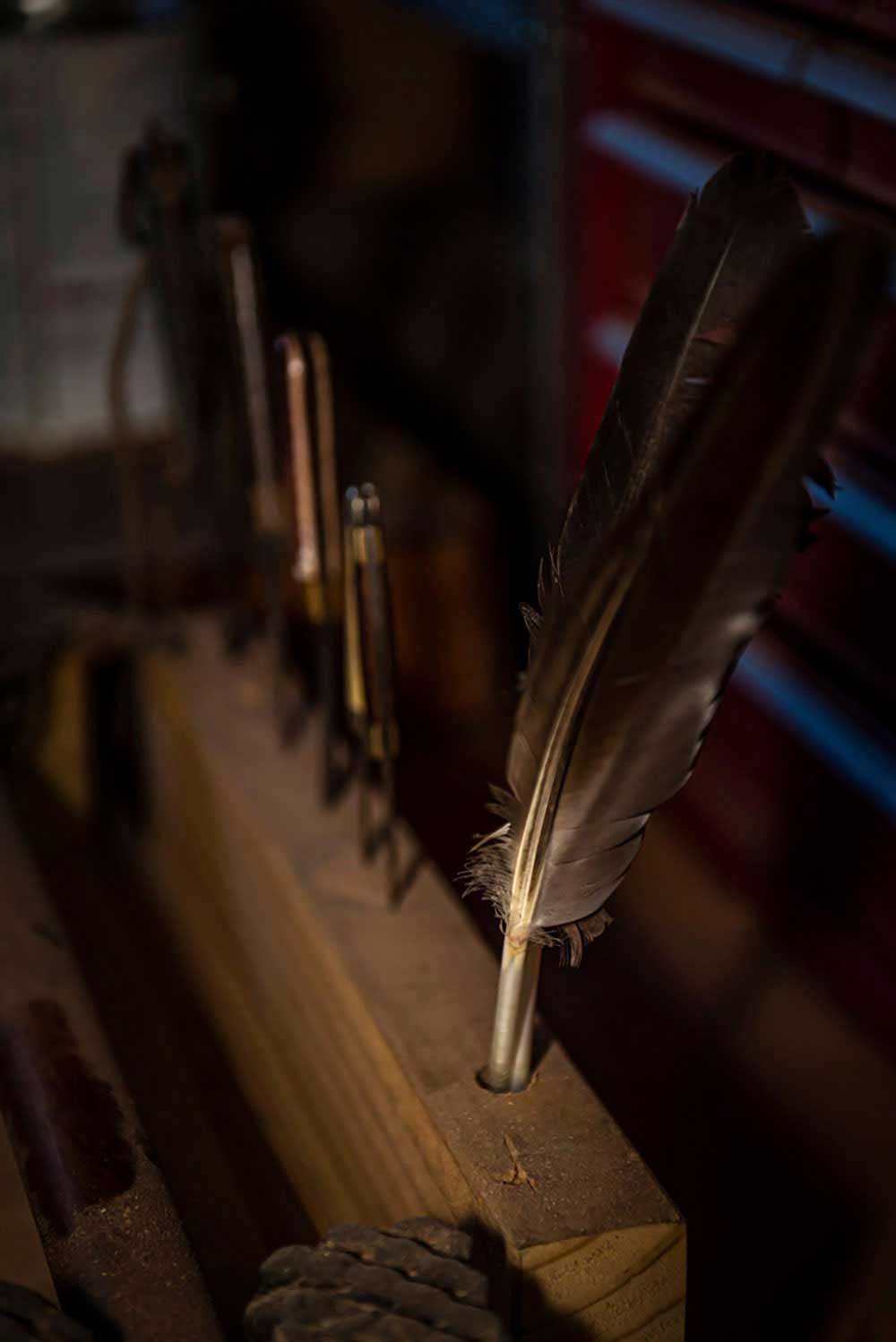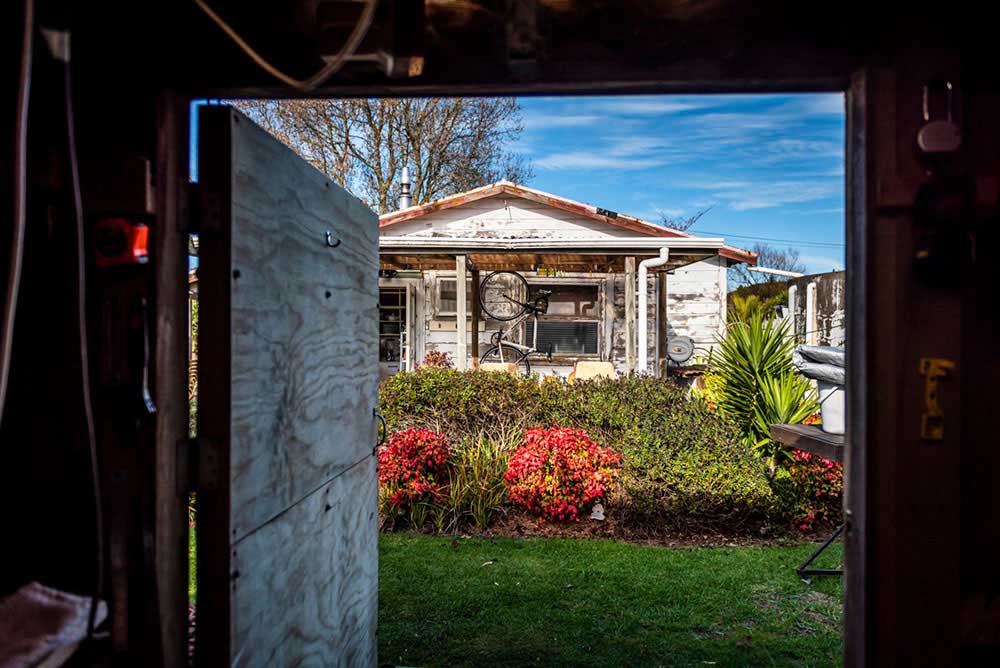Roi Toia is a friend, a spiritual guide and, more than anything, an experienced Maori carver. In the world of the Polynesian seafarers who made of Aotearoa New Zealand their home, the role of a carver assumes deep spiritual meaning.
The carver, once becoming a master of the art of Whakairo, is recognized as a “Tohunga Whakairo”. “Tohunga” defines a practitioner of a traditional Maori fine art who reaches the highest level of skill, bringing his work to a spiritual level. To the Maori, who had not written their history in words until the 19th century, the art of Whakairo represents a way of recording history and, most important, ancestry.
Ancestry plays a pivotal role in the understanding of the Maori way of life: it represents the connection to the roots, to those voyagers of the waka canoes who first reached Aotearoa, the “Land of the Long White Cloud”, as it is recalled in the tribal narratives. The Maori actually trace their lineage back to the the beginning of time, to god-like beings who transcend time and space, from which human kind arose in a journey to the terrestrial realm. The prestige of a family is written in the history of their iwi, the often very wide group of people who share common blood-lineage. The further back in time the iwi can recollect its origins, the bigger its mana, the essential life-force which translate into prestige.
It is the sacred duty of a Tohunga Whakairo to impress this genealogy into the timber. The wooden structures of a marae, the sacred ground where a wharenui – the “sacred house” – is built, are always adorned with carved patterns and figures recounting the history of the iwi. The feats of the most prominent tipuna, the ancestors, are recorded into these shapes, as a memento of the long way which brought the present generation into being.
In more recent times, the practitioners of the art of Whakairo have started applying their sacred knowledge to represent artistically the forms of Papatuanuku, the Mother Earth which manifests herself into the surrounding nature. The highly inspired sculptures produced by Maori carvers became object of great interest, especially after the milestone exhibition “Te Maori” travelled the United States from 1984 to 1986, shedding light to the extremely fine skills of the carvers of Aotearoa New Zealand.
Roi Toia, born in 1966 from descendants of the Nga Puhi iwi, is one of the young carvers who surfed the wave of Maori renaissance and established himself as a talented and experienced professional. His work is permeated with spiritual essence, and his very way of life is carved into the wood. When I address him as a Tohunga, he reproaches me, because is not up to people of my status to bestow him with such title. Being a Maori carver goes along with the pursuit of perfection down to the tiniest detail.
When, in 2018, I started searching for eminent sources of Maori knowledge, the path has led me to my first meeting with Roi. In turn, Roi pointed me towards not a target, but a direction, which has eventually taken me to deepen my knowledge of Maoridom among the Tuhoe iwi of the Bay of Plenty of Aotearoa New Zealand. In the village of Ruatoki I had the chance to study the history and practice of another ancient Maori art, the Haka, which later allowed me to produce the reportage “The Haka Way of Life”.
In 2020, while the world was living one of the most uncertain time of its recent history, Roi has opened the door of his studio and let me portray his work-flow, his tools, the craftsmanship making his way of life. The workshop is located in a shed in his backyard, surrounded by Roi’s beautiful garden, where nature thrives producing lush trees and beautiful flowers. It is always a pleasure to meet Roi: every time he takes me for a journey to some corners of the soul of Aotearoa, without leaving his patio. He prepares a coffee every Italian would love. He is also a member of the fire brigades, often travelling to Canada and other countries to save the forests of world. He really loves the woods.
About Matteo Fabi
Matteo Fabi, born in Bari, Italy, 1987, is a freelance photographer and writer. He graduated with a bachelor in Economics in 2012, and started a brief career in logistics and retail, before realising his future was far from home, pursuing his passion for storytelling. In 2013 he moves to London, where attends the GoFreelance course at the London School of Journalism. In 2015 travels to Nepal for a 3-month internship in photojournalism with the no-profit VCD Nepal, during which he witnesses first-hand the catastrophic earthquake which shook the whole country on April 25. From this experience will arise, in 2016, his first reportage, “Gorkha: One Year Later”, describing the dire conditions of the Himalayan communities of Gorkha district twelve months after the catastrophe.
He then leaves the bustling life of London and moves to Australia, where he would spend two of the following three years travelling extensively throughout the country. During 2018 he travels to New Zealand, where he lives for about ten months and produces the reportage about Maori customs “The Haka Way of Life”. The experience among the Maori, one of the best established indigenous communities in the world, would be striking for his growth as a photojournalist, setting alight his interest in socio-economic dynamics involving the indigenous people of the world. In 2019, during a brief visit to Peru, he is guest of the Harakbut tribe of the Madre de Dios basin, whose life is portrayed in the feature “Native Seeds of Change”. After this experience, he would choose to fulfil a long time dream: living in South America. The triggering factor was the meeting of Rosa during his time in Australia: they would travel together to Asia and New Zealand, where Matteo got stuck by the pandemic for eight months. Finally, in November 2020, he would be able to rejoin his partner in Paraguay, where a new chapter of his life has just begun. [Official Website]



